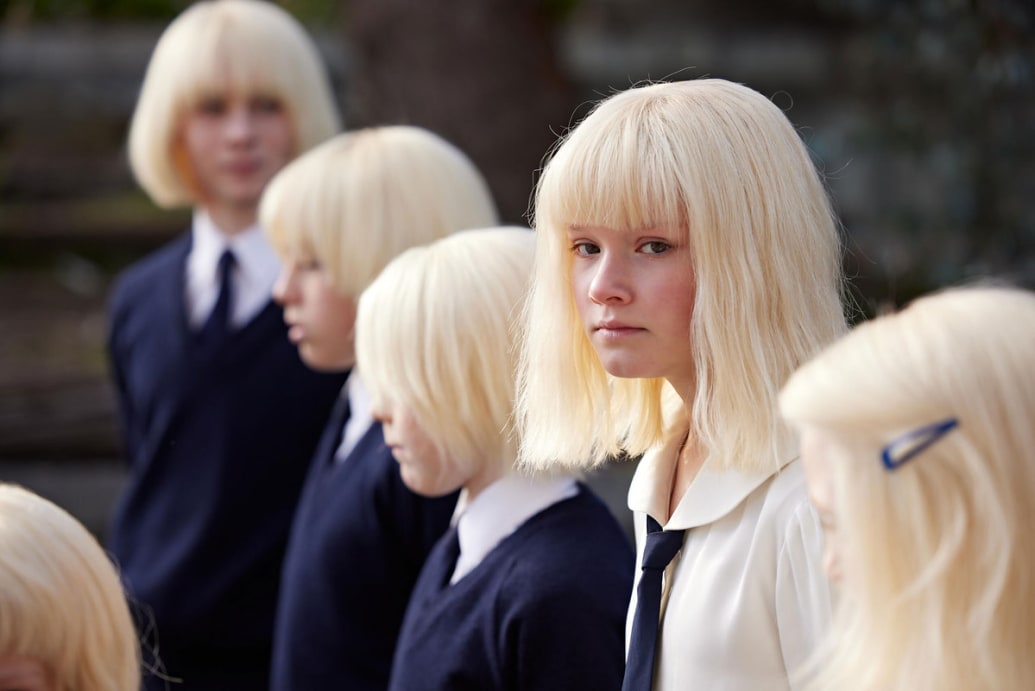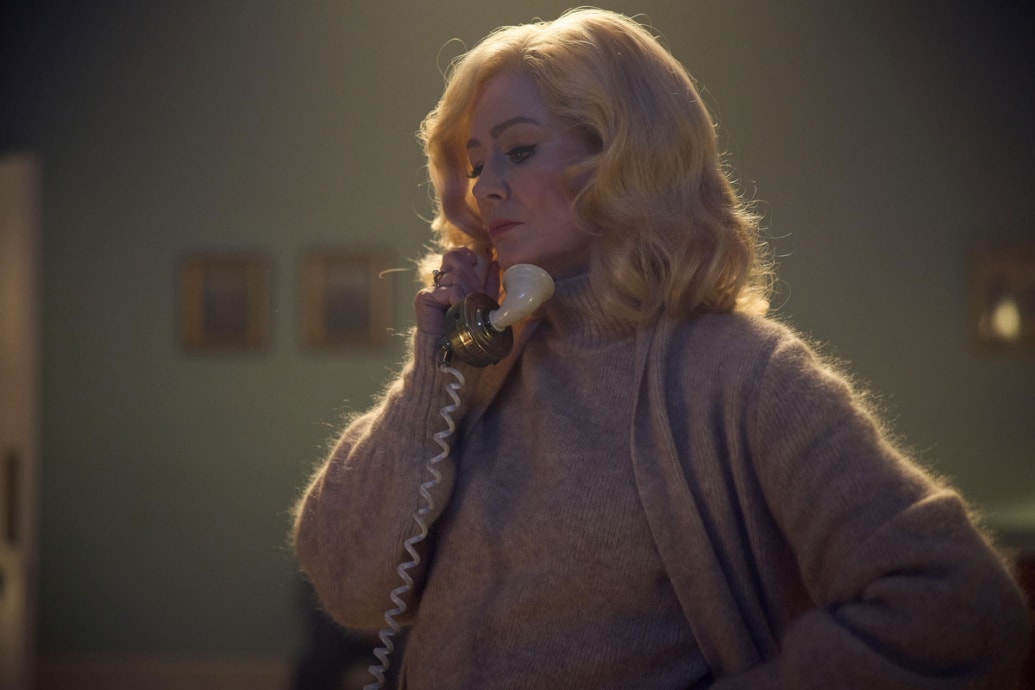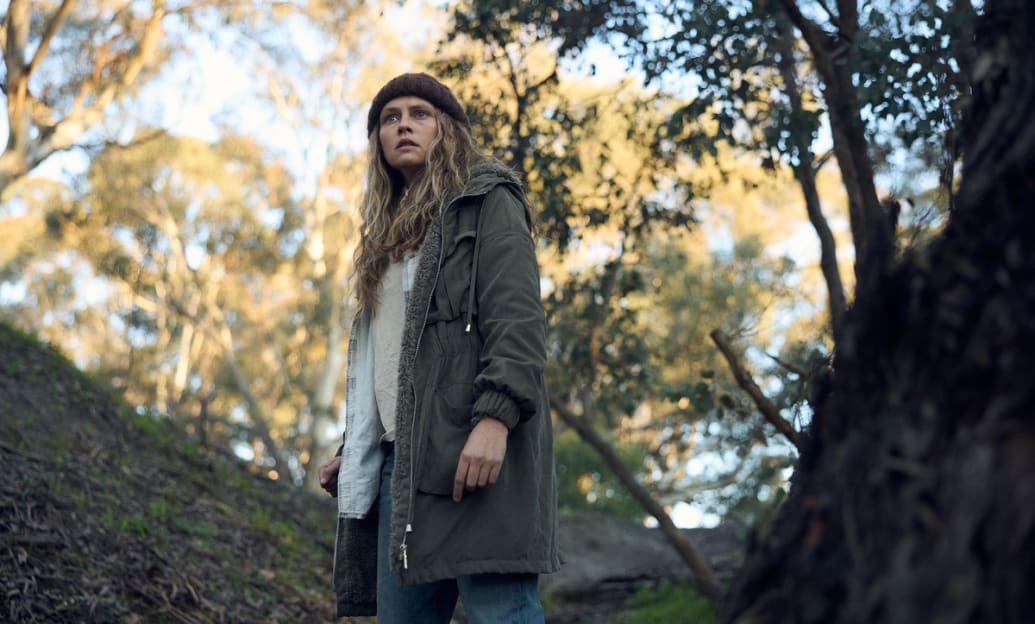If your nightmares involve a group of pale children dressed like Veruca Salt in Charlie and the Chocolate Factory and wearing Sia wigs, I’m sorry to say that Hulu’s new series, The Clearing (premiering on Hulu May 24), is not for you. It’ll simply be too hair-raising, too bloodcurdling, and too downright dreadful for you to make it past even the premiere episode’s opening scene.
Lucky for the rest of us, who don’t live in fear of a world populated by 2014 Maddie Zieglers, we can watch The Clearing with little problem. Well, unless you consider the show’s thematic density to be a problem, or its chilling depiction of ruthless cult tactics—which are no easier to handle than that opening image, but doled out with grace and prudence throughout the series’ first four episodes. That’s on full display from that first scene, where a young girl named Sarah (Lily LaTorre) is kidnapped from an Australian back road on the way home from school, after being lured into danger by another girl, Amy (Julia Savage)—one of the series’ many bleach blonde bob-sporting kids.
Sarah’s anger and fear are forcefully subdued, and she’s told that she’ll now be called Asha. Her confusion briefly dissipates when her captors tell her that they’re taking Sarah home to her mother, whom Sarah quickly finds out is not her birth mother, but rather an imposingly prim and proper middle-aged woman, Adrienne (Miranda Otto), who leads a cult called The Kindred.
Across the four episodes made available for critics, The Clearing—an Australian series that comes to Hulu by way of Disney’s international partnerships—deftly dissects cult behaviors and the trauma they heap onto their child members. Though the Kindred is inspired by a similar cult in recent Australian history, its practices are eerily reminiscent of modern American iterations, like NXIVM. That historical basis, and nimble fictionalized mystery led by a bewitching Otto, make The Clearing a captivating Aussie transplant that burrows deep into cult psychology and its lifelong effects, without feeling exploitative.

Hulu
The Kindred—and the estate they live on, the mud-mired Blackmarsh—all follow their mother’s orders dutifully, despite Adrienne rarely being present among them. Instead, her collection of adult lackeys does her bidding, doling out punishments and keeping Adrienne’s “children” in line. This means strict diets, constant exercise, and time in a damp, locked cellar if there’s any backtalk. Some of Adrienne’s cohorts enjoy this more than others, particularly Tamsin (Kate Mulvany), who revels in imposing penalties as harsh as her crude bowl cut.
As easy as Tamsin’s haircut makes it to despise her and her wicked doings even more, it is era-appropriate. The Clearing utilizes television’s current favorite (aka, most overused) storytelling device, the split timeline narrative, to deploy its series of slow-burn twists. The show opens in the cult’s heyday, sometime in the closing decades of the 20th century. And in the present, long after the Kindred is dissolved by police, we meet Freya (Teresa Palmer), who is somehow connected to the Kindred, and is on high alert after news reports of a local child abduction lead her to believe that the cult may not be as defunct as she thought.
Though The Clearing’s dual timelines are arriving at a saturation point, the show employs its interwoven chronology in a delightfully tricky manner. Episodic cliffhangers feel far less like manipulative tactics to keep the viewer tuned in than they do in service to the story. Clues to the bigger picture are scattered carefully across both periods, though no answers will be handed out without doing the work. Happily, despite its thematic heaviness, The Clearing makes great use of its time, with episodes blazing past, but never feeling rushed.
This is often the result of some terrific central performances, particularly from Otto and Palmer. The news of the missing child causes Freya to start unraveling, worrying for the safety of her own son. And while Palmer’s work can sometimes be melodramatic, she pulls it back before all of that emotion and paranoia goes off a cliff, keeping her character’s humanity intact.
Otto, on the other hand, is her opposite. Adrienne is tightly wound and soft-spoken, a tactic she employs to gain the trust and love of her “children,” despite being the one to order their abuse. Otto ghoulishly sulks through the frame, feigning quiet rigidity while sprinkling proverbial gunpowder in her wake; Adrienne feels as if she could explode at any moment. And though she rarely does, the threat is enough to keep everyone in her orbit on their toes.
That includes the members of Adrienne’s church, where she preaches a sort of mix of Christian ideology and Hindu karmic retribution. Her congregants have bought into it entirely, so much so that even when she lines up her collection of 10 blonde children before them, nobody bats an eye. “They are as pure as untainted as it is possible to be,” Adrienne says about all of the children she obtained by some form of illegal means. “A generation raised away from the suffocating rules of society, nurtured under the most perfect conditions.”

Hulu
This level of attainable perfection is what Adrienne’s followers are after, and they’ll place themselves under her thumb to get it. Adrienne promises as often as she manipulates, and distorts the line between the two when she “clears” her congregants, a mysterious form of absolving them of their sins. (You can draw your own connection to a modern organization that uses that terminology.)
Adrienne controls through both favors and blackmail, a tactic often employed by cult leaders—as most recently highly documented in the extensive coverage of NXIVM. While The Clearing never stoops to depicting the vile sexual cruelty that Keith Raniere is said to have utilized, Americans will certainly draw parallels. The Clearing is most fascinating when it examines the parasitic relationship between the powerful and the powerless, and the inevitable trauma that this symbiosis creates.

Hulu
The show can, however, be a lot to handle in one sitting. Whether it’s watching children constantly in peril, or the entire production being awash in Listerine blue, The Clearing does occasionally feel overbearing. But considering what the show does so well—maintaining a consistently gripping mystery, and doing it across two timelines that never feel like they’re warring—those are easily forgivable snags. Or perhaps, rather, easily cleared sins.
Liked this review? Sign up to get our weekly See Skip newsletter every Tuesday and find out what new shows and movies are worth watching, and which aren’t.
This post originally appeared on and written by:
Coleman Spilde
The Daily Beast 2023-05-23 23:01:00

